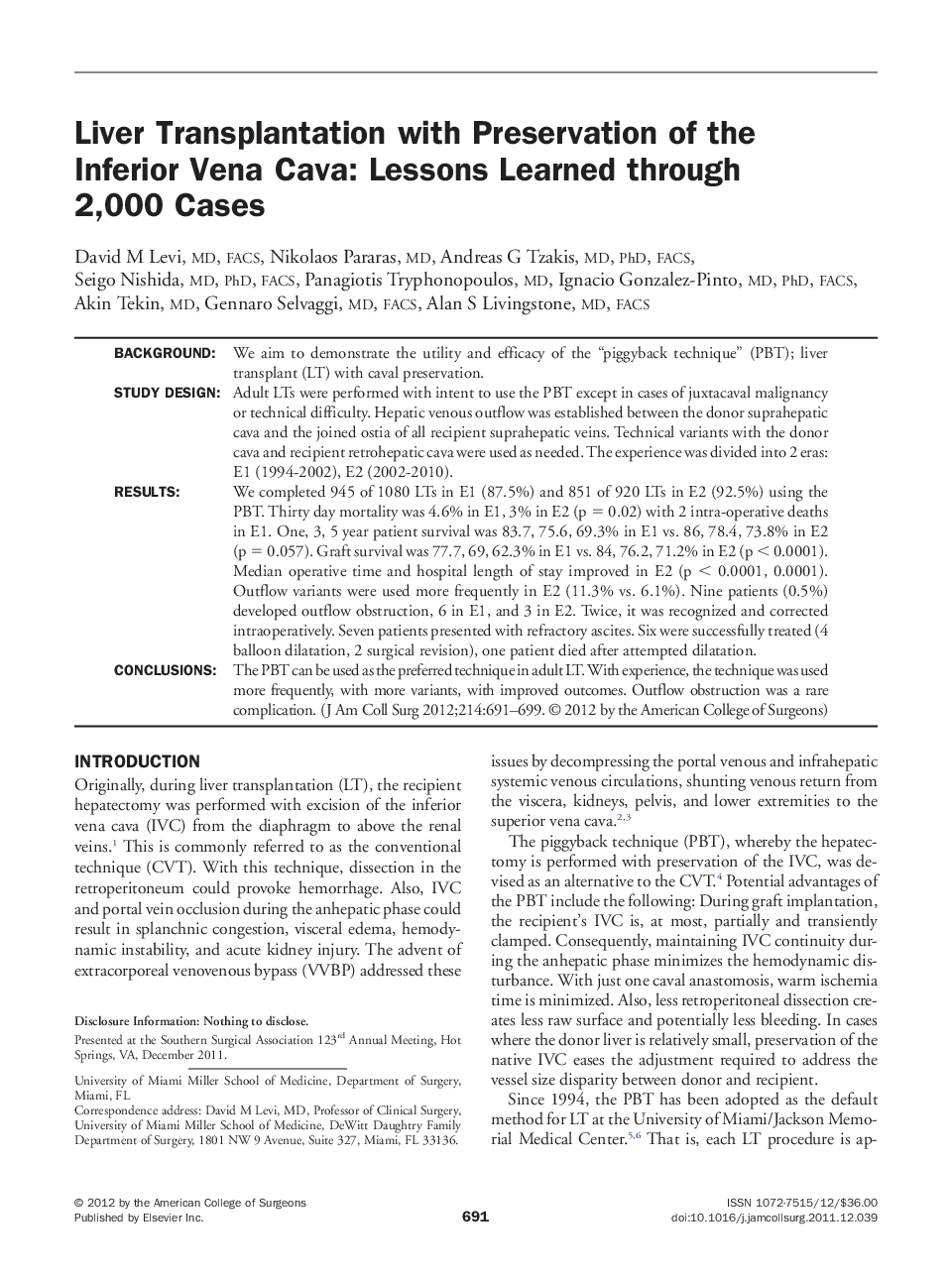| Article ID | Journal | Published Year | Pages | File Type |
|---|---|---|---|---|
| 4293625 | Journal of the American College of Surgeons | 2012 | 8 Pages |
BackgroundWe aim to demonstrate the utility and efficacy of the “piggyback technique” (PBT); liver transplant (LT) with caval preservation.Study DesignAdult LTs were performed with intent to use the PBT except in cases of juxtacaval malignancy or technical difficulty. Hepatic venous outflow was established between the donor suprahepatic cava and the joined ostia of all recipient suprahepatic veins. Technical variants with the donor cava and recipient retrohepatic cava were used as needed. The experience was divided into 2 eras: E1 (1994-2002), E2 (2002-2010).ResultsWe completed 945 of 1080 LTs in E1 (87.5%) and 851 of 920 LTs in E2 (92.5%) using the PBT. Thirty day mortality was 4.6% in E1, 3% in E2 (p = 0.02) with 2 intra-operative deaths in E1. One, 3, 5 year patient survival was 83.7, 75.6, 69.3% in E1 vs. 86, 78.4, 73.8% in E2 (p = 0.057). Graft survival was 77.7, 69, 62.3% in E1 vs. 84, 76.2, 71.2% in E2 (p < 0.0001). Median operative time and hospital length of stay improved in E2 (p < 0.0001, 0.0001). Outflow variants were used more frequently in E2 (11.3% vs. 6.1%). Nine patients (0.5%) developed outflow obstruction, 6 in E1, and 3 in E2. Twice, it was recognized and corrected intraoperatively. Seven patients presented with refractory ascites. Six were successfully treated (4 balloon dilatation, 2 surgical revision), one patient died after attempted dilatation.ConclusionsThe PBT can be used as the preferred technique in adult LT. With experience, the technique was used more frequently, with more variants, with improved outcomes. Outflow obstruction was a rare complication.
